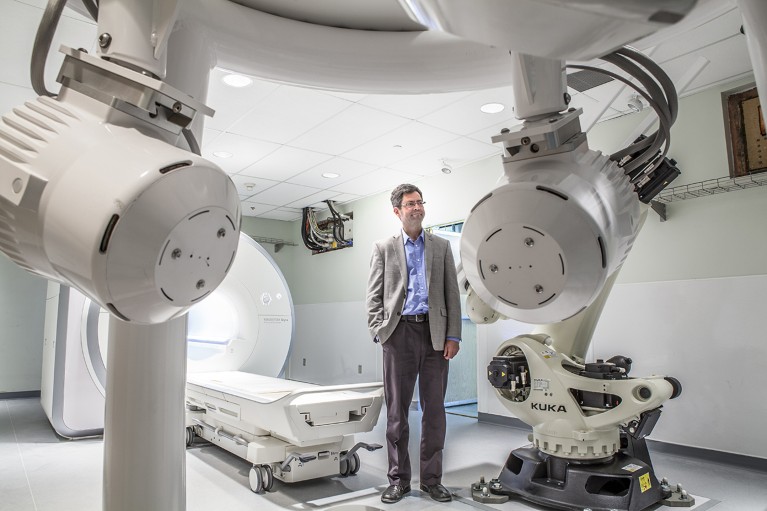How nanobots are accelerating cancer-targeting therapies
Article Date: 29 October 2025
Article URL: https://www.nature.com/articles/d41586-025-03480-z
Article Image: Cover image
Summary
Researchers are racing to turn micro‑ and nanorobotic technologies into tools for cancer diagnosis and treatment. Work ranges from magnetically steered nanobots guided inside MRI scanners in pigs, to DNA‑origami devices that release clotting enzymes at tumour vasculature, to biohybrid designs that use bacteria or sperm as propulsion and targeting systems. These devices promise highly targeted drug delivery, new biopsy tools and ways to starve tumours of oxygen. Most advances remain preclinical but show clear, stepwise progress toward human use.
Key Points
- Swarms of magnetically controlled nanobots have been steered in large animals (pigs) using MRI fields, improving delivery to organs such as the liver.
- DNA origami enables nanoscale containers that conceal and release therapeutic cargo (for example, thrombin) on binding to tumour markers, showing efficacy in mouse models.
- Biohybrid robots combine living cells (bacteria, sperm) with synthetic parts to exploit natural motility and sensing for targeted delivery and tissue interaction.
- Nanobots can perform diverse roles: targeted drug delivery, tumour oxygen deprivation, improved biopsies and localised immune modulation.
- Despite promising animal studies, clinical translation is pending — key hurdles include safety, immune responses, manufacturing scale and regulatory approval.
Author style
Punchy: the article focuses on concrete experimental milestones (MRI steering in pigs; DNA‑origami thrombin release; biohybrid sperm and bacterial systems) and stresses that while human trials haven’t begun, the field is rapidly consolidating techniques that make translation plausible.
Why should I read this?
Short version — this is where cancer treatment could get a proper upgrade. If you care about treatments that hit tumours, not the rest of you, this roundup saves you time by pulling together the best, most tangible advances in nanorobotics and explaining what actually works in animals and what still needs to happen before people can benefit.
Context and Relevance
Nanorobotics sits at the intersection of precision medicine, materials science and bioengineering. Targeted nanobots could reduce the collateral damage of conventional therapies (chemotherapy, radiation) and enable new approaches such as local clotting of tumour blood supply or intratumoural drug release. The article is relevant to researchers, clinicians tracking translational technologies, investors in biotech and regulators — it maps where the field stands, the biological tricks being borrowed from nature and the principal barriers to clinical adoption (immune compatibility, reproducible manufacturing, safety testing and regulation).

